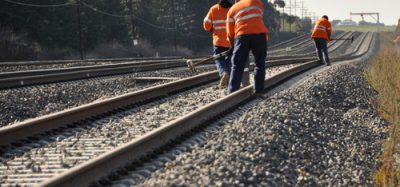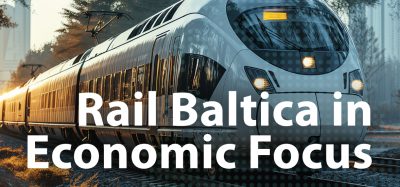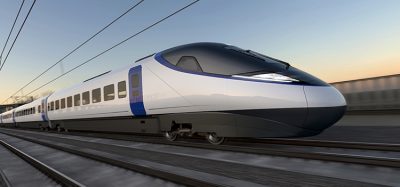The railway of the third millennium
Posted: 3 November 2005 | | No comments yet
The Euro is not sufficient to unite Europe: an international railways system is needed to sweep away the borders between the different States by overcoming technological barriers and to compete with air, inland-water and road transport.
The Euro is not sufficient to unite Europe: an international railways system is needed to sweep away the borders between the different States by overcoming technological barriers and to compete with air, inland-water and road transport.
The Euro is not sufficient to unite Europe: an international railways system is needed to sweep away the borders between the different States by overcoming technological barriers and to compete with air, inland-water and road transport.
International railways – the great competitive challenge
Technology is the only method that can enable us to make a breakthrough compared with other means of transport, and subsequently the key to overcoming the biggest problem facing railways: the barriers between different national systems. Do not forget that the word ‘railways’ really describes a group of national systems, each with its own particular characteristics, and therefore each national border is a true barrier to the passage of trains. It is easy to see the immense disadvantage that exists compared to air and road transport, neither of which encounter barriers at national borders. So, in order to be competitive, it is vital to build up an interoperable homogeneous railway system quickly and to establish a common plan for the migration of national technologies to ones that create interoperability.
National technology development
Costs have been affected due to the development of technologies on a national basis. This is because dedicated and specific technologies have been developed for each national railway system. This has resulted in a large group of companies, each one creating – on the basis of a national need – a technical product that often is not only unable to dialogue with neighbouring railways but has the great drawback of being extremely costly.
Railway vs airline technology
Railway technology is certainly more expensive than airline technology, mainly because there is no single market but many local markets which have grown out of separate national philosophies, and therefore the different companies develop national technologies to meet the needs of those markets.
Technology – the breakthrough
The breakdown of national barriers lies in the strategic role of technology for interoperability – the only thing that can liberate the railway system and enable it to make the leap from national to continental. This is needed to take market share away from other systems of transport, which are already operating on a continental, or even intercontinental, scale without any barriers.
Transforming railway systems
The possible transformation of railways from a collection of systems to a single system is what the European Union is promoting. ‘European’ technological systems, instead of national ones, will be less expensive and at the same time, more reliable, easier to procure and with decidedly better performances. This is the challenge facing the railways in the third millennium: denationalising and becoming European.
A small revolution that could have big results
It is clear that this new concept of the ‘railway’ will lead to great benefits. Expanding the market will increase the competitiveness of interchangeable products; there will be greater reliability, maintainability, availability and safety.
Electrification
It is a European interoperability standard that electrification of new lines should be 25kV (kilovolts). It is also a solution that other networks chose some time ago because, at the same cost, it makes it possible to have a more powerful system and therefore to operate with a greater number of trains, each one faster or with a greater permissible load.
The compatibility of SCMT
The SCMT (Train Running Control System) uses European standard buoys and it is therefore easy to use for the first-level ETCS (European Train Control System). On the other hand, where we are developing HS/HC (High Speed/High Capacity), we are aiming directly at the second-level ETCS and thus using radio (GSM-Railway). We are starting with Rome-Naples, which will later be extended to Milan, and between Turin and Venice.
The SCC (command and control system) is RFI’s system for the remote control of large sections of network or long routes.
Is this a plan or a reality?
It is already a reality on the Adriatic route. The control centre for all the stations on the line as far as Bologna is in Bari – whereas the Rome-Genoa line is controlled from Pisa. The ultimate aim is to supervise the entire national network from eight points, coordinated by an operations room.
A safer network
The introduction of these automatisms will make the network safer. Our modern safety systems are certified at level 4 of the pertinent CEN-CENELEC standards, by independent assessors.
Whole network extension
Automatic Train Control (10,500km) is being extended along with Automatic Train Protection (6,000km) systems to the whole national network.
Technological problem number one
Basically there are two problems. First and foremost, innovative technologies have a shorter lifetime than the old electromechanical technologies and so they have to be constantly updated. We have solved this problem by new types of control with our suppliers, combining supply of the equipment with service assistance for very long periods of time (as much as 20 years). The supplier engages to keep both the hardware and software up-to-date, so as to keep our system from becoming obsolete or hard to maintain in a short time.
Technological problem number two
The second problem is to succeed in making the most of the enormous potential introduced by these new technologies. In fact, the range of action shifts from the simple operation of controlling the various parts of the railway, which we were used to doing, to very important possibilities for automatic diagnosis and business intelligence, which introduce a link with the company’s management information technology systems.
Positive changes
The new technologies will not just change the railway but also the company. A close connection is created between the process automation technology and the management information technology systems. This is the great challenge that we are planning for and in three or four years, will completely revolutionise both the railway system and our company.
Italy – leading the field or chasing other European countries?
Italy started from a backward situation, with electromechanical type technology. It was only at the end of the 1990s that we embarked on this great technological transformation. Other national networks started sooner but are now more restricted in view of the speed at which new technologies are generated. Italy may have been the last to arrive, but we tried to look as far ahead as possible and adopt the most innovative approach. Today, as far as innovation is concerned, we are certainly in the front line.
But that doesn’t mean our network is the best – it means that the new technologies we are developing are state-of-the-art and the most advanced. Naturally they are inserted into a railway system that did not receive much attention in the past. Four years in the future and the Italian railway network will certainly be at the forefront. Meanwhile, we have important dates coming up, for example 2007, when our whole network will be equipped with ATC or ATP systems or even with second-level ERTMS/ETCS. The next important date is December 2005 with the start-up of commercial operation of the HS section between Rome and Naples with second-level ERTMS/ETCS (GSM-R radio).
Issue
Related topics
European Rail Traffic Management System (ERTMS), European Train Control System (ETCS), Global System for Mobile Communications – Railway (GSM-R), Infrastructure Developments, Interoperability & Liberalisation







